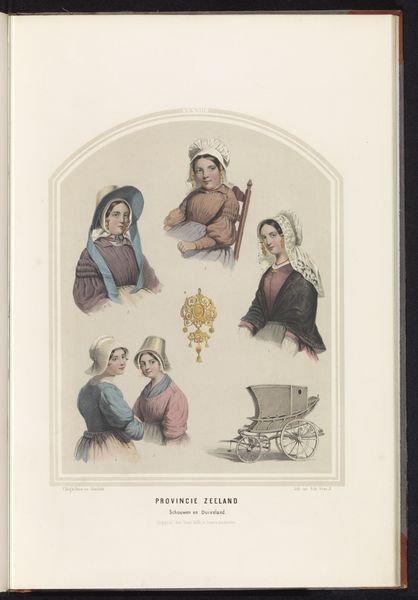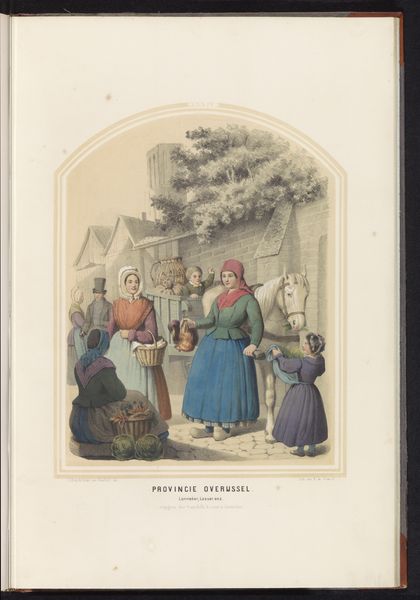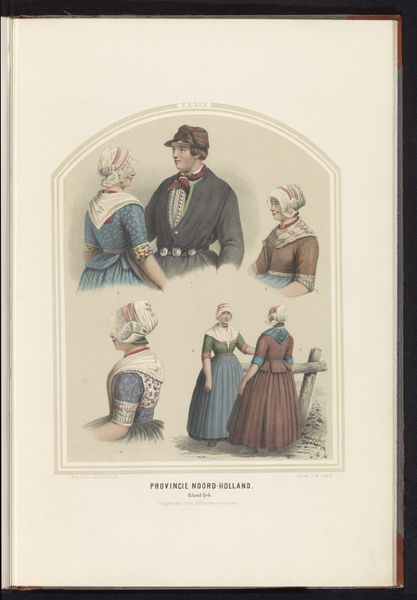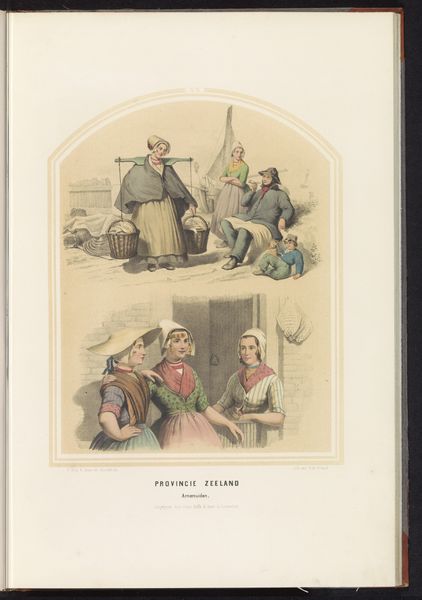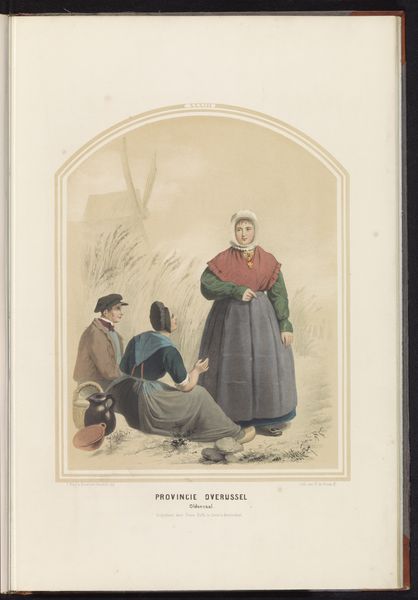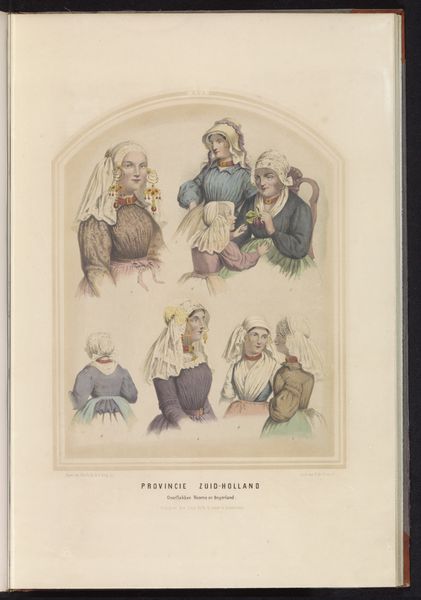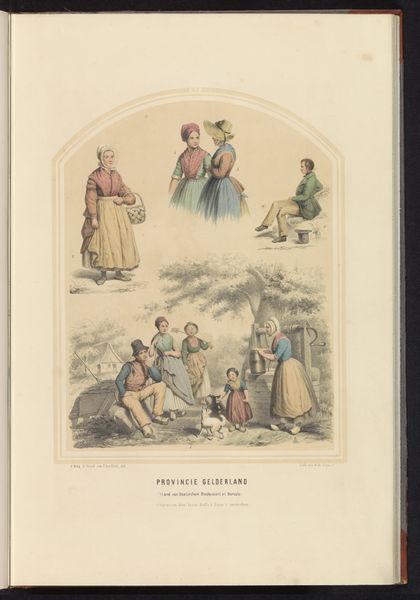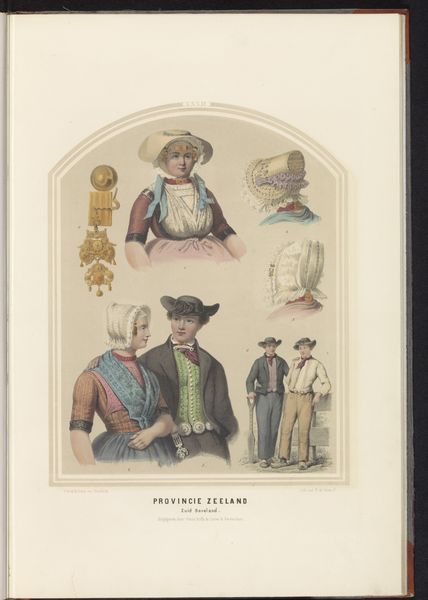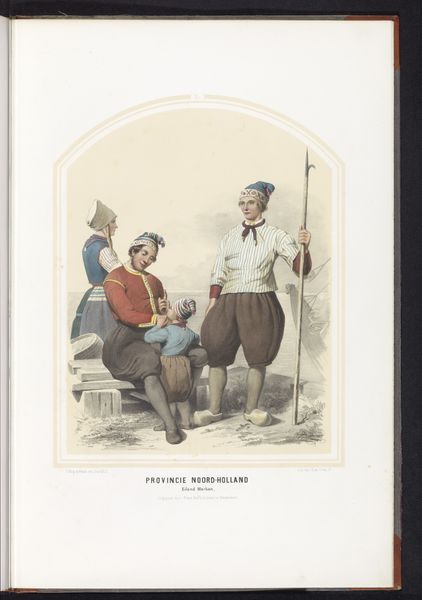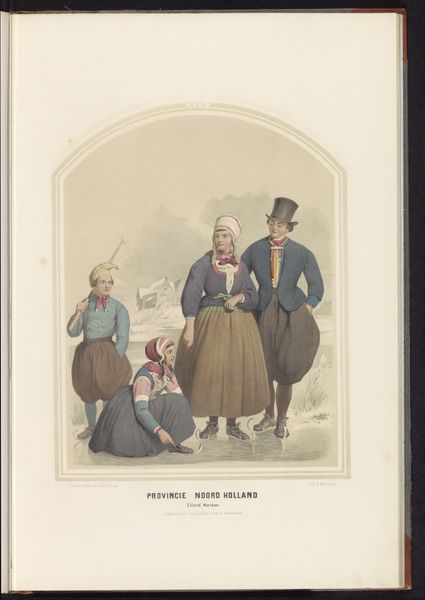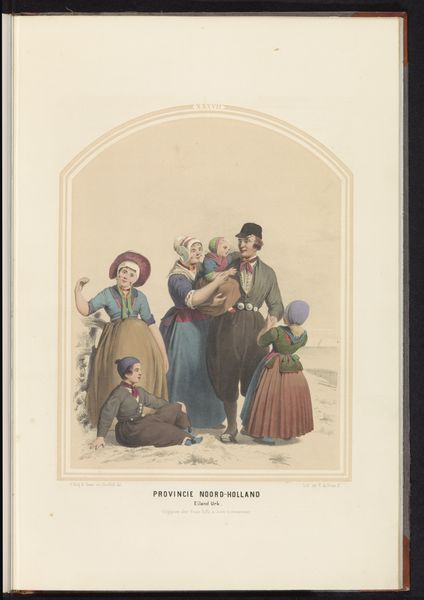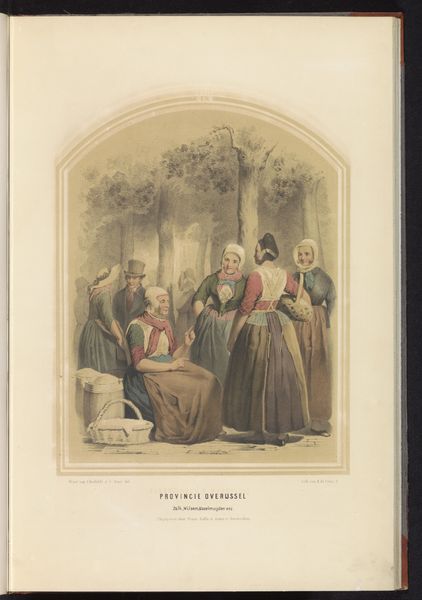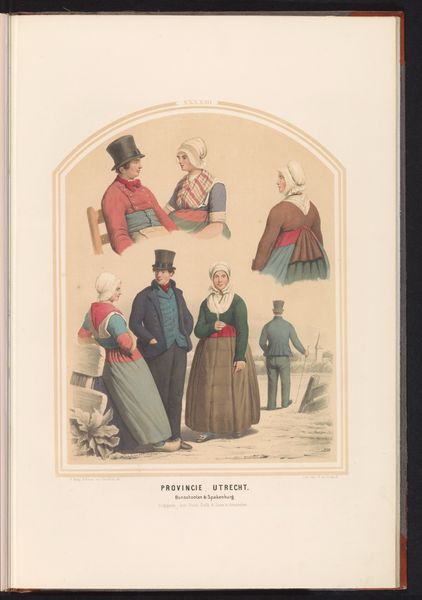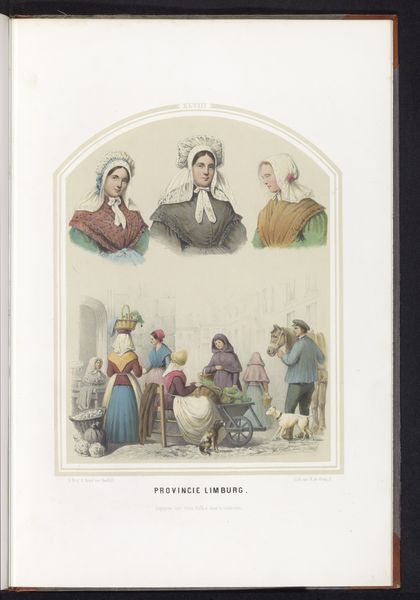
drawing, coloured-pencil
#
portrait
#
drawing
#
coloured-pencil
#
caricature
#
coloured pencil
#
genre-painting
Dimensions: height 523 mm, width 350 mm
Copyright: Rijks Museum: Open Domain
Curator: Looking at this work, I'm immediately struck by a sense of almost ghostly preservation, an attempt to capture and categorize a culture that may already have been fading when it was created. What's your take, Editor? Editor: I find it interesting; my immediate response is that this is about restraint and contained vibrancy. There’s so much covered skin; what are we supposed to make of these restrictions? Curator: Precisely. What we have here is “Klederdracht van eiland Walcheren in Zeeland, 1857,” or Traditional Costumes from the Island of Walcheren in Zeeland, 1857, by Ruurt de Vries, a drawing created with colored pencils. It is currently held at the Rijksmuseum. I think it's impossible to ignore how meticulously these costumes are rendered. But who were they really for? Was this an inside or an outside depiction of a community? Editor: Yes! The clothing here has this visual language of symbols; bonnets with very particular lacework. Look at that ornamental glove! And also look at the shoes—flat and very… restricted! This communicates so much about domestic roles and ritual. Each component almost reads as an emblem, whispering stories of marriage, status, or trade. I also see a caricature tag… can you explain more about that? Curator: Well, that connects back to the act of documenting and interpreting “otherness.” How often do such endeavors reduce the subject to caricatures? To me, there is definitely a colonizing element at play; the women depicted become like specimens pinned under glass. I'm wondering about the politics of observation and power inherent to the act of portraying a people's attire. Who gets to tell the story, and what are they saying by capturing and framing it in this way? Editor: I do see that tension too now, between cultural artifact and cultural ownership. Even though it's beautifully rendered with careful pencil strokes and colors, your question hits the bullseye: whose gaze are we adopting as viewers? Is it simply observation, or something more invasive? Curator: Absolutely. It provokes reflection on cultural preservation itself: is it a neutral act, or does it inevitably involve selection, interpretation, and yes, potentially, distortion? These beautiful drawings serve as a reminder to always interrogate the historical lens through which we perceive and understand the stories of others. Editor: Well put! I'll never look at traditional garments quite the same way again without thinking about who they really represent, and how they might have become… symbols.
Comments
No comments
Be the first to comment and join the conversation on the ultimate creative platform.
